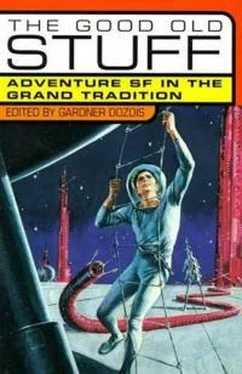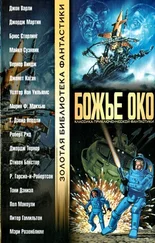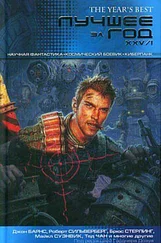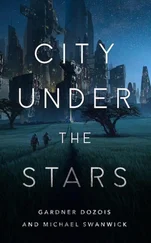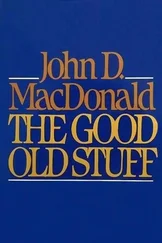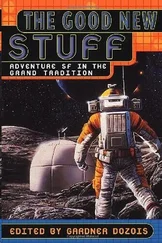Гарднер Дозуа - The Good Old Stuff
Здесь есть возможность читать онлайн «Гарднер Дозуа - The Good Old Stuff» весь текст электронной книги совершенно бесплатно (целиком полную версию без сокращений). В некоторых случаях можно слушать аудио, скачать через торрент в формате fb2 и присутствует краткое содержание. Год выпуска: 1998, ISBN: 1998, Издательство: St. Martin's Griffin, Жанр: Фантастика и фэнтези, на английском языке. Описание произведения, (предисловие) а так же отзывы посетителей доступны на портале библиотеки ЛибКат.
- Название:The Good Old Stuff
- Автор:
- Издательство:St. Martin's Griffin
- Жанр:
- Год:1998
- ISBN:0-312-19275-4
- Рейтинг книги:3 / 5. Голосов: 1
-
Избранное:Добавить в избранное
- Отзывы:
-
Ваша оценка:
- 60
- 1
- 2
- 3
- 4
- 5
The Good Old Stuff: краткое содержание, описание и аннотация
Предлагаем к чтению аннотацию, описание, краткое содержание или предисловие (зависит от того, что написал сам автор книги «The Good Old Stuff»). Если вы не нашли необходимую информацию о книге — напишите в комментариях, мы постараемся отыскать её.
The Good Old Stuff — читать онлайн бесплатно полную книгу (весь текст) целиком
Ниже представлен текст книги, разбитый по страницам. Система сохранения места последней прочитанной страницы, позволяет с удобством читать онлайн бесплатно книгу «The Good Old Stuff», без необходимости каждый раз заново искать на чём Вы остановились. Поставьте закладку, и сможете в любой момент перейти на страницу, на которой закончили чтение.
Интервал:
Закладка:
Ah, muito obrigado, Senhor Augusto! If I hurry I can just catch the ship to Krishna. Cheerio!”
The New Prime
Jack Vance
Much as SF authors writing today about phenomonology or the nature of reality write inevitably in the shadow of Philip K. Dick, so writers describing distant worlds and alien societies with strange alien customs write in the shadow of Jack Vance. No one in the history of the field has brought more intelligence, imagination, or inexhaustible fertility of invention to that theme than Vance, a fertility which shows no sign of slackening even here at the end of the ‘90s, with recent books such as Night Lamp being as richly and lushly imaginative as the stuff he was writing in the ‘50s; even ostensible potboilers such as his Planet of Adventure series are full of vivid and richly portrayed alien societies, and bizarre and often profoundly disturbing insights into the ways in which human psychology might be altered by immersion in alien values and cultural systems. No one is better than Vance is at delivering that quintessential “sense of wonder” that is at the heart of science fiction, and reading him has left me a legacy of evocative images that will stay with me forever.
Like his colleagues L. Sprague de Camp and Fritz Leiber, Vance has produced some of the very best work of the last fifty years in several different genres, and is of immense evolutionary importance to the development both of modern fantasy and of modern science fiction. In fantasy, his classic novel The Dying Earth —together with the related “Cugel the Clever” stories, collected in The Eyes of the Overworld, Cugel Saga , and Rhialto the Marvellous —would have enormous impact on future generations of fantasy writers. (It could be argued—and has been—that these works are actually science fiction—or at least a hybrid form called “science fantasy”—rather than fantasy, taking place in a future so many millions of years from now that technology has indeed become indistinguishable from magic, as per Arthur C. Clarke’s famous dictum. These arguments are not without merit, and are hard to refute—nevertheless, for anyone who has kept an eye on the fantasy genre over the last few decades, or ever read a slushpile, Vance’s influence on the fantasy field is hard to deny, no matter what hairs taxonomists split.) In the same way, his most famous SF novels— The Dragon Masters, The Last Castle, Big Planet, Emphyrio , the five-volume “Demon Princes” series (the best known of which are The Star King and The Killing Machine ), Blue World, The Anome, The Languages of Pao , among many others—have had a widespread impact on generations of science fiction writers. And his effect on the specialized form of Space Adventure or Space Opera (as differentiated from science fiction in general) is immense—with the possible exception of Poul Anderson, nobody has written more of that sort of work, or written at such a consistently high level of quality, as has Jack Vance.
Born in San Francisco in 1920, Vance served throughout World War II in the U.S. Merchant Navy. Most of the individual stories that would later be melded into his first novel, The Dying Earth , were written while Vance was at sea—he was unable to sell them, a problem he would also have with the book itself, the market for fantasy being almost non-existent at the time. The Dying Earth was eventually published in an obscure edition in 1950 by a small semi-professional press, went out of print almost immediately, and remained out of print for more than a decade thereafter. Nevertheless, it became an underground cult classic, and its effect on future generations of writers, both in and out of the fantasy genre, is incalculable: for one example out of many, The Dying Earth is a major influence on Gene Wolfe’s The Book of the New Sun (Wolfe has said, for instance, that The Book of Gold which is mentioned by Severian is supposed to be The Dying Earth ).
In SF, especially during the ‘50s and ‘60s, Vance was sometimes criticized for not being “rigorous” enough in his writing, for turning out Space Opera rather than “real” science fiction; I suspect this is one of the things that largely kept him out of Astounding the leading market of his day (most of his work for Astounding would be rather bland by Vance’s standards, only one story there, the later novella “The Miracle Workers,” being full-throated Vancian Future Baroque—a somewhat atypical style for Astounding , and I can’t help but wonder if John W. Campbell took the story mostly because it deals fairly centrally with psionics, a pet Campbellian topic of the time).
Instead, he had to sell the bulk of his work to lower-paying “salvage” markets such as Thrilling Wonder Stories and Startling Stories , the last resort for a story before you relegated it to the trunk.
Certainly it’s true that there are few hard-science restraints on his fictional settings, where people in tiny personal spaceships zip easily and effortlessly across immense gulfs of space, vast powers and potencies are manipulated, and the universe is full to bursting with both strange alien races and curiously mutated variations on the normal human stock (this is one of Vance’s major themes in fact: how plastic and changeable the stuff of human nature is, how what we think of as “humanity” itself can be shaped and molded like wax, under the proper sort of environmental pressures, often with profoundly disturbing results), and there is little in his work that resembles either the broad social satire popular in Galaxy magazine at the time under H. L. Gold or the sober speculations about the impact of scientific advancement on current human society that was Astounding’s preferred stock-in-trade. The irony is that, in retrospect, the stuff he was writing for those lowly “salvage markets” seems just as significant—if not more significant—as most of the stuff that was appearing in the more-respectable magazines, ostensibly at the forefront of the field.
In fact, Vance would do some of his best early work for magazines such as Thrilling Wonder Stories and Startling Stories and the short-lived Worlds Beyond in the mid ‘50s—“The Five Gold Bands,” “Abercrombie Station,” “The Houses of Izam,” “The Kokod Warriors” and the other “Magnus Ridolph” stories, and the magazine version of “Big Planet,” among others.
The story that follows, “The New Prime,” one of Vance’s best from that period, is yet another demonstration of the ease and fertility of his imagination; instead of settling for one background for the story, as most writers would have done, Vance—glorying in his strength and inventiveness—gives us five instead, each as rich, evocative, and ornate as the others—and each capable, in the hands of an ordinary writer, of having served as the background for an entire novel all by itself. Vance, though, as you will see, is no ordinary writer ...
By the late ‘50s and early ‘60s, Vance was doing some of his best work, and some of the best work of the period, most of it by this time for the new Pohl Galaxy and for F&SF —“The Men Return,” the underrated The Languages of Pao (one of only a handful of books even today to deal with semantics as a science; Delany’s Babel-17 and Ian Watson’s The Embedding are two later examples), the wonderful The Star King and The Killing Machine (two of the best hybrids of SF and the mystery/espionage novel ever written ), “Green Magic,” The Blue World, “The Dragon Master,” “The Last Castle,” and many others. Throughout the ‘70s and into the ‘80s, he would continue to produce a steady stream of memorable work, including the brilliant Emphyrio, The Anome, Trullion: Alastor 2262 , the “Planet of Adventure” series, The Face, The Book of Dreams , and at least a dozen others.
Читать дальшеИнтервал:
Закладка:
Похожие книги на «The Good Old Stuff»
Представляем Вашему вниманию похожие книги на «The Good Old Stuff» списком для выбора. Мы отобрали схожую по названию и смыслу литературу в надежде предоставить читателям больше вариантов отыскать новые, интересные, ещё непрочитанные произведения.
Обсуждение, отзывы о книге «The Good Old Stuff» и просто собственные мнения читателей. Оставьте ваши комментарии, напишите, что Вы думаете о произведении, его смысле или главных героях. Укажите что конкретно понравилось, а что нет, и почему Вы так считаете.
